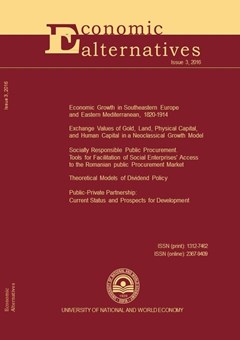Exchange Values of Gold, Land, Physical Capital, and Human Capital in a Neoclassical Growth Model
Author: Wei-Bin Zhang
Abstract
Households of contemporary economies are characterized by many assets such as gold, silver, diamond, land, housing, physical wealth, in their portfolios. Yet modern dynamic economic theory has only a few mathematical models with physical wealth, land and gold based on microeconomic foundation. This study deals with portfolio choice equilibrium with land, gold and physical capital, and human capital within a general equilibrium framework. The growth determinants are endogenous physical and human wealth accumulation. The model studies dynamic interactions between land value, gold value, economic structural change, wealth accumulation and human capital growth by integrating the neoclassical growth theory, the Ricardian theory, and the Uzawa-Lucas model with Zhang’s utility function. The human capital accumulation is due to Arrow’s learning by doing, Uzawa’s learning through education, and Zhang’s learning through consuming (leisure creativity). We simulate the motion of the economic system and demonstrate the existence of a unique stable equilibrium point. Comparative dynamic analysis is conducted with regard to exogenous changes in the propensity to consume gold, the propensity to receive education, the propensity to consume housing, the propensity to save, and the population.


